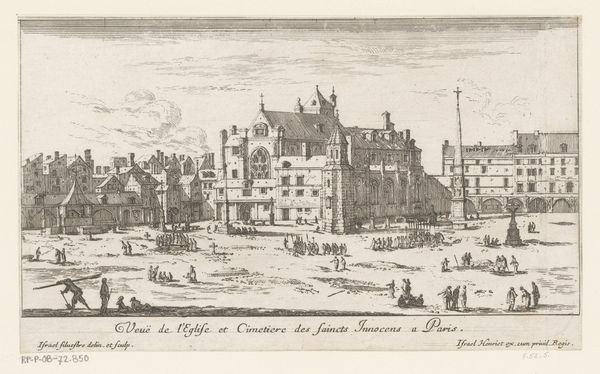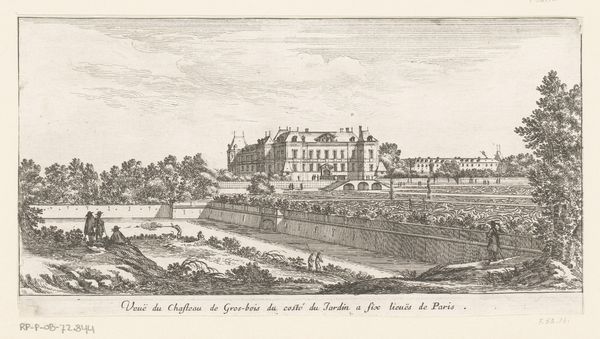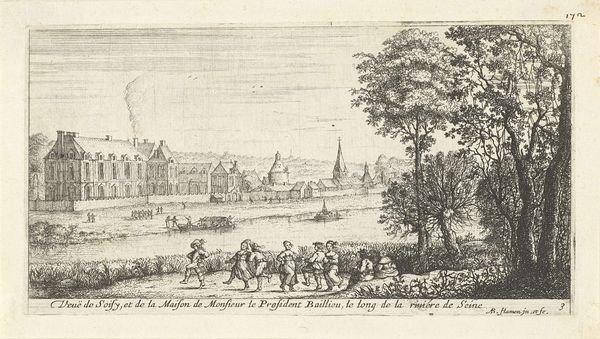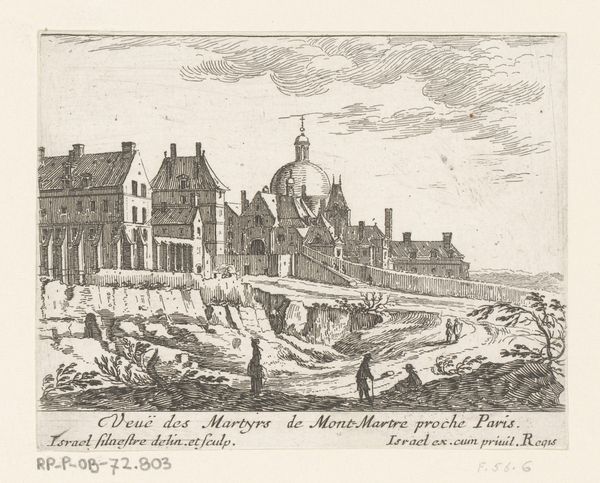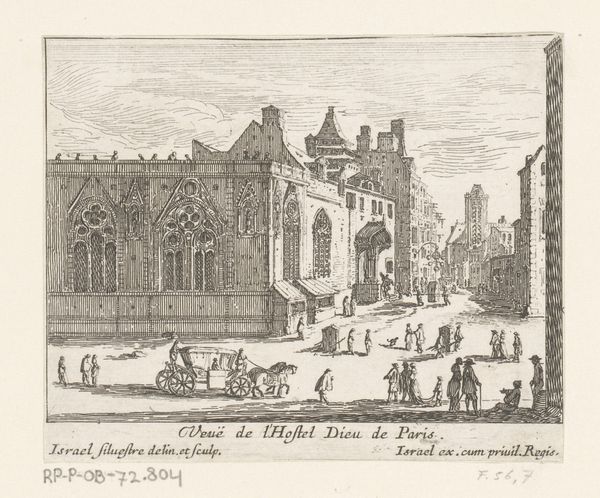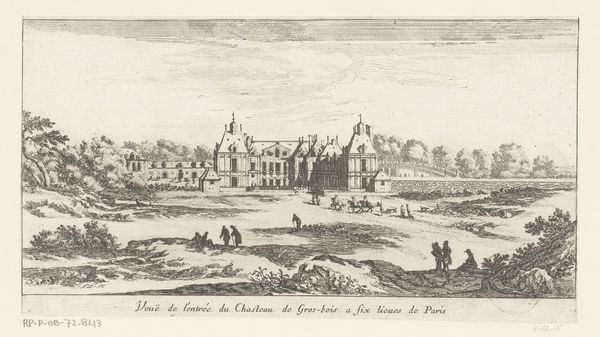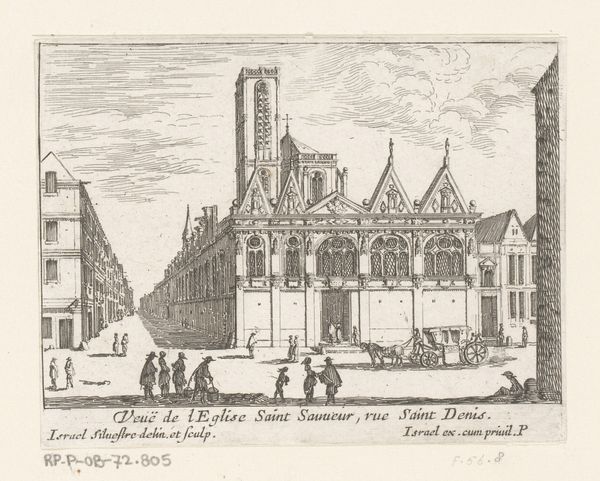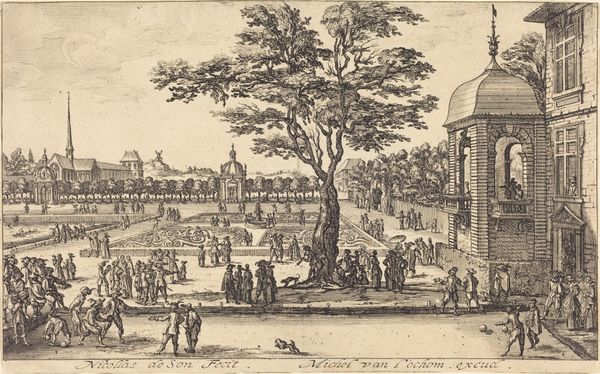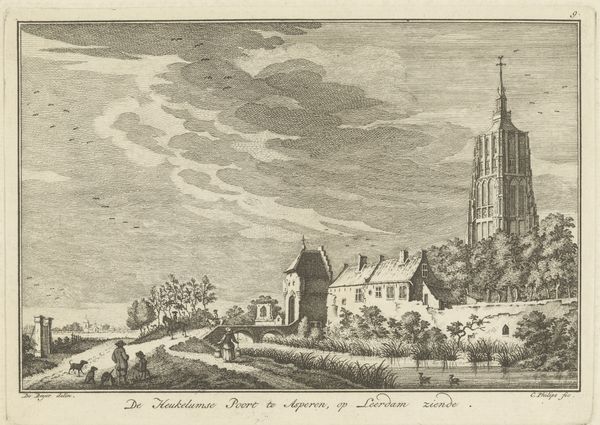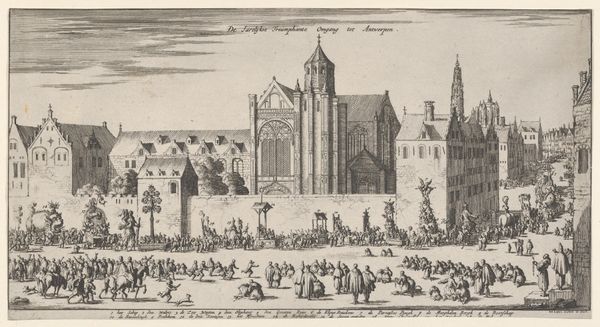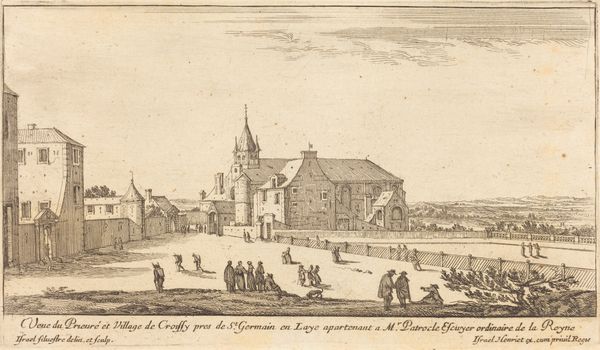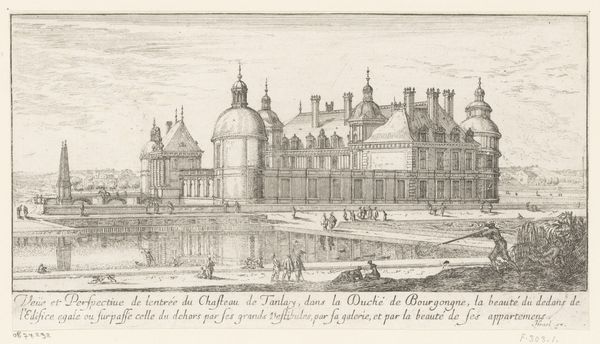
print, engraving
#
baroque
# print
#
pen illustration
#
pen sketch
#
old engraving style
#
landscape
#
line
#
cityscape
#
engraving
Dimensions: height 118 mm, width 200 mm
Copyright: Rijks Museum: Open Domain
Curator: I'm immediately struck by the industrious energy of this port scene. It’s rendered with such precise lines, capturing both the grandeur of the architecture and the bustling activity of everyday life. Editor: Exactly. This is “View of the Port of Rouen,” an engraving made around 1657 by Israel Silvestre. Currently it resides in the Rijksmuseum's collection. Curator: Silvestre's ability to convey depth with such spare means is quite remarkable. You have this imposing city gate to the left and then the gaze gently floats off into the distance with such simple, yet persuasive rendering of space. Editor: Silvestre was a master of line. That's precisely what allowed him to cram so much detail into this cityscape. You have laborers, boats, buildings rendered in a clarity and intricacy typical of baroque prints aimed to popularize city views. Curator: There’s something romantic about these old engravings, don’t you think? A bygone world meticulously recorded. Like little stage sets waiting for a drama to unfold. What kinds of people populated it? What were their days like? This really puts you there. Editor: That touches on the intent of many baroque prints like this, these images offered the expanding urban middle class the opportunity to “possess” these landmarks through printed versions. They were deeply implicated in emerging senses of national and civic pride. The 'vedute' style here really elevates the ordinary harbor scene to one worthy of royal attention, note the "cum privil Regis" remark on the image which meant a privilege granted by the King, usually involved a form of copyright protection, safeguarding the artist’s and publisher's rights. Curator: And he does all of that through such understated means. Its not dramatic in the same way other art from the Baroque may have been. Instead we get this sense of serenity despite the fact we're looking at the city at work. Editor: That contrast gets at the complexities of the time: grandeur underpinned by constant labor and new systems of representation being formed as a result. Makes me consider the function that images play today. Curator: Indeed. A surprisingly poignant scene packed within what seems like such a straightforward image. Editor: Couldn’t agree more; it truly captures a moment in time—or, perhaps, a moment constructed for a time.
Comments
No comments
Be the first to comment and join the conversation on the ultimate creative platform.


